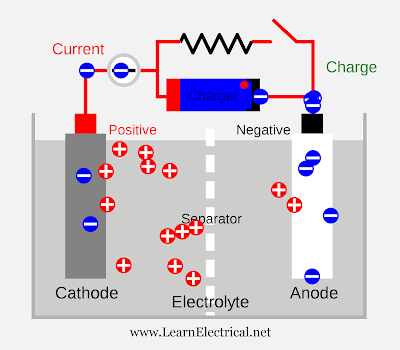Why we can not store AC like DC
Before going to discussion on "why we can't store ac current in batteries" understand what is AC & DC voltages.AC voltage changes it's polarity 50-60 times per second (50Hz for India,UK & 60Hz for USA).But DC is constant voltage with respect to time.If we consider charging mechanism of electro-chemical cell or battery,it is continuous process of injecting electrons on negative side(-Ve) plate and protons positive side(+Ve) plate.
AC voltage changes it's polarity 50-60 times per second battery cannot change their terminals with 50-60 Hz speed to maintain AC output.so that’s why we can’t store AC in Batteries.
We cannot store AC in batteries because AC changes their polarity up to 50-60(depends on frequency) times in a second.Storing of charges will not happen as in a cycle charging and discharging happens when we connect a battery with AC supply,.so average current stored in battery is zero,that's why we can't store AC in batteries.However AC can be stored in capacitor or inductor but this is not much efficient.so we have only DC batteries in our power system.



















